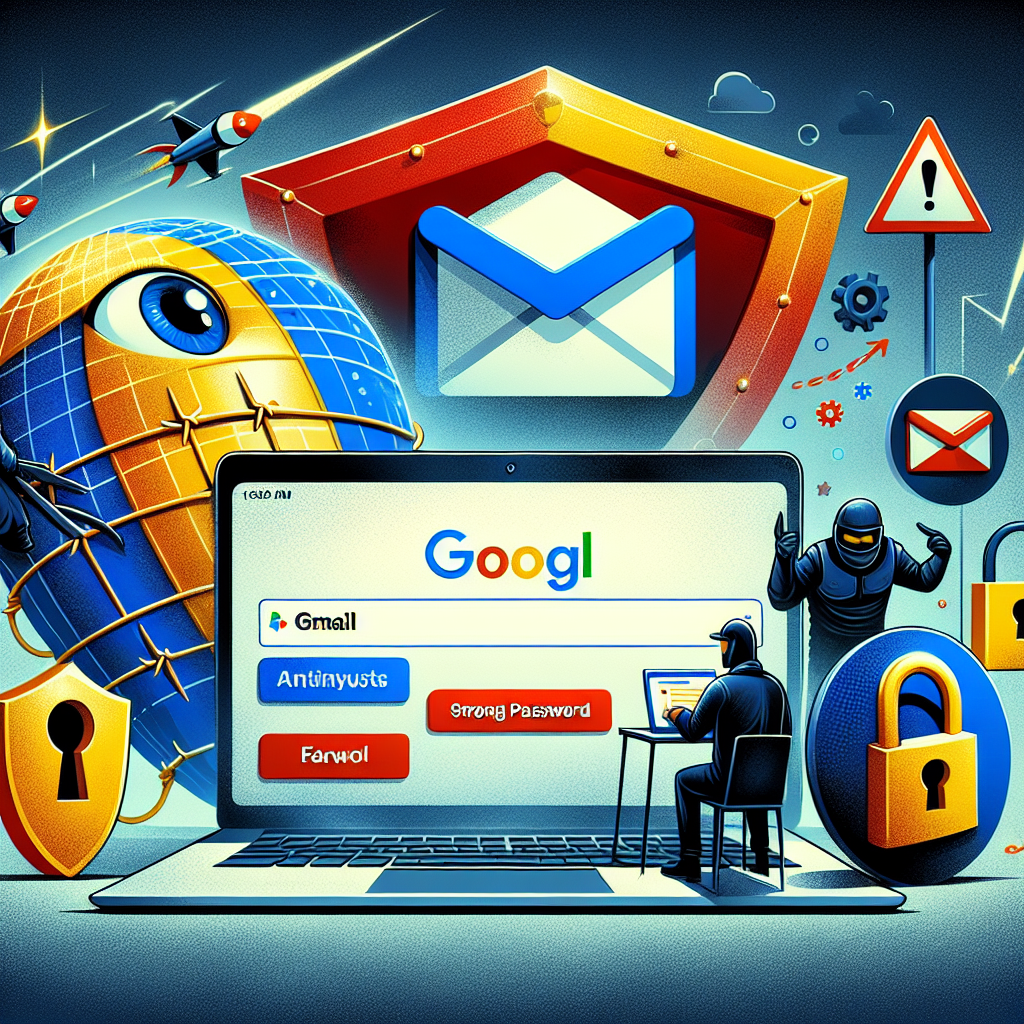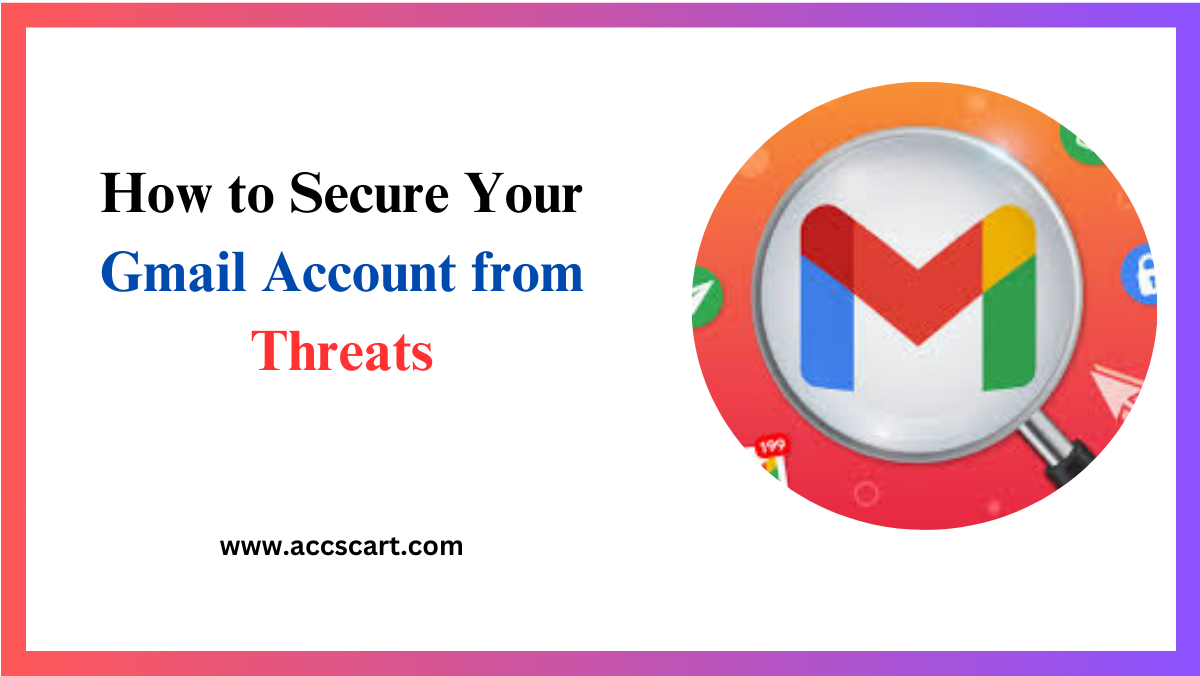In our digital age, email security is more crucial than ever. With the increasing amount of sensitive information shared and stored in our inboxes, securing your Gmail accounts has never been more important. Whether you’re a casual user or rely on Gmail accounts for business communications, understanding how to protect your account from threats is essential. This guide will walk you through practical steps to enhance your Gmail accounts security, ensuring your information remains safe from malicious actors.
Understanding the Importance of Email Security
Email is the backbone of digital communication. From personal conversations to confidential business emails, our inboxes hold a plethora of sensitive information. Consequently, they are prime targets for cybercriminals.
1. Why You Should Care About Email Security
Every day, millions of phishing emails are sent with the intent to deceive recipients. If successful, these attacks can lead to stolen identities, financial loss, or unauthorized access to sensitive data. Ensuring your Gmail accounts is secure protects not only your information but also the privacy of those you communicate with.
2. The Risks of Insecure Accounts
Insecure email accounts are vulnerable to a myriad of threats. Unauthorized access can result in:
- Data breaches where personal and professional information is exposed.
- Unauthorized transactions if linked accounts are compromised.
- Loss of control over social media accounts, especially if passwords are reused across platforms.
Understanding these risks underscores the importance of proactive email security measures.
3. The Role of Gmail in Your Digital Life
Gmail accounts is more than just an email service. It’s integrated with various Google services, from Google Drive to Google Photos. Securing your Gmail accounts ensures the safety of all connected services, safeguarding your entire digital ecosystem.

Setting Up Two-Factor Authentication
Two-factor authentication (2FA) adds an extra layer of security to your Gmail accounts. By requiring not just a password, but a second form of verification, 2FA significantly reduces the risk of unauthorized access.
1. What is Two-Factor Authentication?
Two-factor authentication is a security process where users provide two different authentication factors to verify their identity. This typically involves something you know (your password) and something you have (a verification code sent to your phone).
2. How to Enable Two-Factor Authentication on Gmail
Setting up 2FA for your Gmail accounts is straightforward:
- Go to your Google Account settings.
- Click on ‘Security’ in the left-hand menu.
- Under ‘Signing in to Google’, select ‘2-Step Verification’ and follow the prompts.
- Choose your preferred second step, such as a text message or Google Authenticator app.
3. Benefits of Using Two-Factor Authentication
Enabling 2FA drastically improves your account’s security. Even if someone manages to obtain your password, they won’t be able to access your account without the second verification step.
Recognizing Phishing Attempts
Phishing is a common tactic used by cybercriminals to trick users into revealing personal information. Recognizing these attempts is crucial in protecting your Gmail accounts.
1. What is Phishing?
Phishing involves sending fraudulent emails that appear to be from reputable sources. These emails often contain links to fake websites designed to steal login credentials or personal information.
2. Common Signs of Phishing Emails
Phishing emails often exhibit certain red flags:
- Unusual sender addresses that don’t match legitimate sources.
- Generic greetings like “Dear user” instead of your name.
- Urgent language prompting immediate action.
- Suspicious links or attachments.
3. How to Handle Phishing Attempts
If you receive a suspicious email:
- Do not click on any links or download attachments.
- Verify the sender’s authenticity by contacting the organization directly.
- Report the email to Gmail Accounts by clicking on the three dots and selecting ‘Report Phishing’.
Regularly Updating Passwords
Regularly updating your passwords is a simple yet effective way to enhance your Gmail accounts security. Strong, unique passwords make it harder for cybercriminals to gain access to your account.
1. Why You Need to Update Your Passwords Regularly
Passwords can be compromised without your knowledge through data breaches or malware. Regularly changing your passwords reduces the risk of long-term account exposure.
2. Creating a Strong Password
A strong password should:
- Be at least 12 characters long.
- Include a mix of uppercase and lowercase letters, numbers, and special characters.
- Avoid using easily guessable information like birthdays or common words.
3. Using a Password Manager
Managing multiple strong passwords can be challenging. A password manager securely stores your passwords and can generate complex passwords for you. Tools like LastPass or Dashlane are excellent options.
Utilizing Gmail’s Security Checkup Tools
Google offers various security checkup tools to help you maintain your account’s security. Regularly using these tools ensures your settings are optimized for maximum protection.
1. Importance of Security Checkups
Security checkups provide a comprehensive review of your account’s security settings. They can identify potential vulnerabilities and offer suggestions for improvement.
2. How to Perform a Security Checkup
To perform a security checkup:
- Visit the Google Account Security Checkup page.
- Follow the prompts to review your account’s security settings.
- Address any issues highlighted by the checkup, such as removing unrecognized devices or updating recovery information.
3. Benefits of Regular Security Checkups
Regular security checkups help you stay ahead of potential threats. By routinely reviewing your account settings, you ensure that your Gmail remains secure against evolving cyber threats.
Understanding Suspicious Sign-in Alerts
Google sends out suspicious sign-in alerts to help you stay informed about any potentially unauthorized access attempts. Understanding these alerts is critical in maintaining your Gmail accounts security.
1. What Triggers a Suspicious Sign-in Alert?
A suspicious sign-in alert is triggered when Google detects an unfamiliar login attempt or an attempt from a new device, location, or IP address. These alerts are sent to your registered email and recovery phone number.
2. How to Respond to Suspicious Sign-in Alerts
If you receive a suspicious sign-in alert:
- Review the details provided in the alert, including the device, location, and timestamp of the attempt.
- If the attempt is unfamiliar, take immediate action by changing your password and enabling two-factor authentication.
- Verify recent account activity and sign out of all other web sessions to prevent further unauthorized access.
- Report the suspicious activity to Google if necessary.
3. Importance of Responding to Alerts
Promptly responding to suspicious sign-in alerts can prevent unauthorized access to your account. It ensures that potential threats are identified and mitigated quickly, maintaining the integrity and security of your Gmail account.
Educating Yourself on Cybersecurity Best Practices
Staying informed about cybersecurity is one of the most effective ways to protect your Gmail account. By continuously learning and applying best practices, you can proactively defend against evolving cyber threats.
1. Sources of Cybersecurity Information
Stay updated on the latest cybersecurity trends and practices through:
- Cybersecurity blogs and news sites such as Krebs on Security and Threatpost.
- Online courses and webinars offered by reputable cybersecurity organizations.
- Google’s own security resources and updates.
2. Implementing Best Practices
Some of the key security practices include:
- Using unique passwords for different accounts.
- Regularly updating your software and applications to the latest versions.
- Being cautious of phishing attempts and suspicious links or attachments.
- Keeping backups of important data in secure locations.
3. Benefits of Continuous Learning
Continuous learning about cybersecurity helps you stay ahead of potential threats. By staying informed, you can better protect not only your Gmail account but your entire digital presence.
By adopting these strategies and staying vigilant, you can significantly enhance the security of your Gmail account and maintain peace of mind in your digital communications.
Conclusion
Securing your Gmail accounts is an ongoing process that requires vigilance and proactive measures. By understanding the importance of email security, setting up two-factor authentication, recognizing phishing attempts, regularly updating passwords, and utilizing Gmail’s security checkup tools, you can significantly enhance your account protection.
Stay informed, stay secure, and take control of your digital life today. For more tips and personalized guidance on securing your online presence, consider reaching out to cybersecurity experts or exploring additional resources.
Remember, a secure Gmail accounts is the foundation of a safe and efficient digital life. Start implementing these measures today to protect your information and enjoy peace of mind.









